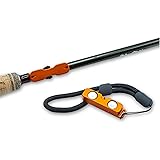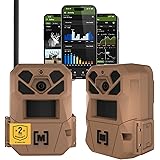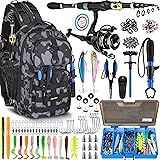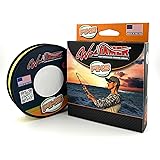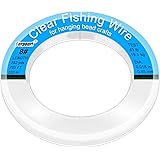The vast expanses of the Colorado River and Lake Mead, straddling the vibrant landscape near Las Vegas, present unique challenges and exhilarating opportunities for dedicated anglers. As highlighted in the accompanying video, an expedition into this arid yet remarkably fertile region requires both meticulous planning and an adaptable mindset. Pursuing trophy striped bass and robust smallmouth bass, alongside the specialized discipline of bowfishing for common carp, demands a strategic approach to tackle diverse aquatic environments and prevailing conditions.
Successful ventures into this territory often commence with a clear “game plan,” encompassing target species, equipment choices, and an understanding of local ecological factors. Navigating these waters effectively necessitates insight into species behavior, such as carp spawning patterns in shallow grassy areas, and the predatory dominance of striped bass over other indigenous species. This comprehensive guide delves deeper into the tactics and environmental considerations for maximizing success on these iconic Southwestern waterways.
Navigating the Waters: Striper and Smallmouth Strategies
Targeting large striped bass and smallmouth bass in the Colorado River and Lake Mead requires a nuanced understanding of their habits and preferred habitats. The goal of landing a significant striper, potentially exceeding 20 pounds, is an ambitious yet achievable objective for seasoned anglers. Success typically hinges on employing substantial baits and understanding the impact of environmental factors.
The Art of Artificial Lures for Trophy Stripers
For impressive striped bass, large swim baits are often the preferred choice, meticulously designed to imitate local forage. As demonstrated in the video, lifelike trout imitations can prove exceptionally effective, eliciting aggressive strikes from these voracious predators. The technique involves a varied retrieve speed, often starting slow in the morning hours to gauge fish activity and gradually adjusting as the day progresses.
The prevalence of stripers in these ecosystems significantly influences the presence and size of other game fish. Their aggressive feeding habits mean that catching a large smallmouth bass, perhaps a 5-pound specimen, is considered an infrequent event, perhaps occurring only once a year for dedicated anglers. This dynamic underscores the importance of tailoring your approach specifically to the dominant species when pursuing specific targets.
Understanding Striper Dominance and Diet
Striped bass are undeniably the apex predators within these freshwater systems, consuming vast quantities of available prey. Consequently, they regulate the populations of other fish species, including various forms of baitfish and even smaller game fish. Their diet is extensive, reflecting their opportunistic nature; therefore, using large, realistic baits that mimic their natural food sources increases the likelihood of a successful strike.
Furthermore, these fish are prized for their culinary value, making catch-and-cook scenarios a popular proposition among anglers. The prospect of preparing freshly caught striper adds an additional layer of reward to the fishing experience, turning a successful outing into a memorable meal.
Mastering the Aim: Bowfishing for Carp in Nevada
When conventional angling methods prove challenging, bowfishing for carp offers an exciting and highly interactive alternative. This specialized discipline transforms fishing into a precision hunting sport, requiring keen eyesight and a steady hand. Targeting common carp, particularly during their spawning season, can yield numerous opportunities for engagement.
Bowfishing Fundamentals and Equipment Setup
The foundational principle of successful bowfishing involves aiming beneath the visible target due to light refraction in water. This optical phenomenon makes fish appear shallower than their actual depth, necessitating an instinctive adjustment to your aiming point. A standard bowfishing setup typically includes a reel, often spooled with specialized line, and a ‘whisker biscuit’ rest to guide the arrow smoothly.
Before executing a shot, the reel’s button must be pressed to release the line freely, preventing any drag that could impede the arrow’s flight. Practice shots are indispensable for calibrating aim and developing a rapid, fluid drawing motion. Though the video mentions “shot like 50 already,” underscoring the intensity of the sport and the abundance of carp, it highlights the numerous opportunities available.
Identifying Carp Hotspots and Spawning Behavior
Carp exhibit predictable behaviors, often congregating in shallow, vegetated areas, especially during their spawning periods. These locations provide abundant food sources and cover, making them prime targets for bowfishing enthusiasts. Identifying these grassy flats, where water meets dense vegetation, significantly increases the chances of encountering active fish.
The pursuit of an elusive albino carp, as vividly depicted in the video, illustrates both the challenge and thrill of bowfishing. Its striking white coloration, while a severe disadvantage for survival due to lack of camouflage, makes it an easily identifiable target. Such unique specimens, often larger due to reduced predation, present a formidable and rewarding challenge for bowfishermen.
In one instance, a successful bowfishing catch yielded a carp weighing approximately 2.20 pounds (2 pounds, 3 ounces), which later expelled a quantity of shad. Another specimen, after losing some forage, was estimated at 2.9 pounds, showcasing the substantial size these carp can attain in these waters.
Lake Mead’s Evolving Ecosystem: Drought and Filtration
Lake Mead, a monumental reservoir vital to the Southwestern United States, presents an intriguing case study in environmental resilience and adaptation. Its current state, marked by significant water level fluctuations, profoundly impacts its ecosystem and subsequently, the angling experience.
The Impact of Persistent Drought Conditions
Lake Mead has endured a prolonged period of drought, resulting in a dramatic decline in water levels over several years, with an accelerated rate observed in the last two years alone. This phenomenon is clearly evidenced by the stark visibility of once-submerged structures, such as the old boat mentioned in the video. Last April, this vessel was entirely underwater; however, it became progressively exposed month by month, eventually grounding in thick mud. This visual provides a powerful metaphor for the lake’s receding waters.
These altered water levels reshape fish habitats, concentrating populations in certain areas or displacing them entirely. Anglers must therefore adapt their strategies, exploring newly accessible shorelines or deeper channels that have become more prominent. The dynamic nature of the lake demands continuous situational awareness and flexibility.
Quagga and Zebra Mussels: Natural Water Filters
Despite the challenges posed by drought, the clarity of Lake Mead’s waters is remarkably high, a characteristic largely attributed to invasive species: quagga and zebra mussels. These prolific filter feeders consume vast quantities of phytoplankton and other microscopic particles, effectively purifying the water column. Consequently, the water becomes exceptionally clear, enhancing visibility for both fish and anglers.
While their ecological impact is complex and often detrimental to native species and infrastructure, their role in maintaining water clarity is undeniable. This clarity, allowing for visibility to considerable depths, provides an advantage for bowfishing, as targets can be spotted from a distance, albeit requiring careful aim adjustment for refraction.
Beyond the Water: Outdoor Pursuits in Las Vegas
A comprehensive outdoor adventure in the Las Vegas region extends beyond the confines of fishing, embracing other recreational activities and explorations. The area offers diverse opportunities for enthusiasts to engage with the natural environment and outdoor sports culture.
Firearms and Hunting: Exploring Local Offerings
The region surrounding Las Vegas also caters to hunting and shooting sports enthusiasts, offering a variety of firearms and gear. Discussions around calibers like the .22-250 for coyote hunting or the versatile .243 highlight the specific interests of hunters in the area. Reputable firearms manufacturers, such as Remington with their reliable 700 series, are often preferred choices for their proven performance and durability.
Visiting local outdoor retailers, such as Sportsman’s Warehouse and Bass Pro Shops, provides an opportunity to explore a wide array of hunting and fishing equipment. These establishments serve as hubs for outdoor enthusiasts, offering not only gear but also insights into local regulations and conditions. Despite a general scarcity of unique inventory, the curiosity sparked by items like an MG42 machine gun demonstrates the diverse interests of patrons.
Navigating Nevada’s Fishing Regulations
A crucial aspect of responsible angling involves adhering to local fishing regulations, which can vary significantly by state and even by specific water bodies. For instance, in Nevada, purchasing specific bait types, such as goldfish, is restricted to licensed dealers, unlike in many other states where they might be readily available at pet stores. This particular regulation for the Colorado River underscores the importance of consulting local wildlife and fisheries departments before an outing. Such regulations are often implemented to prevent the spread of invasive species or diseases, safeguarding the native aquatic populations within these delicate ecosystems.


